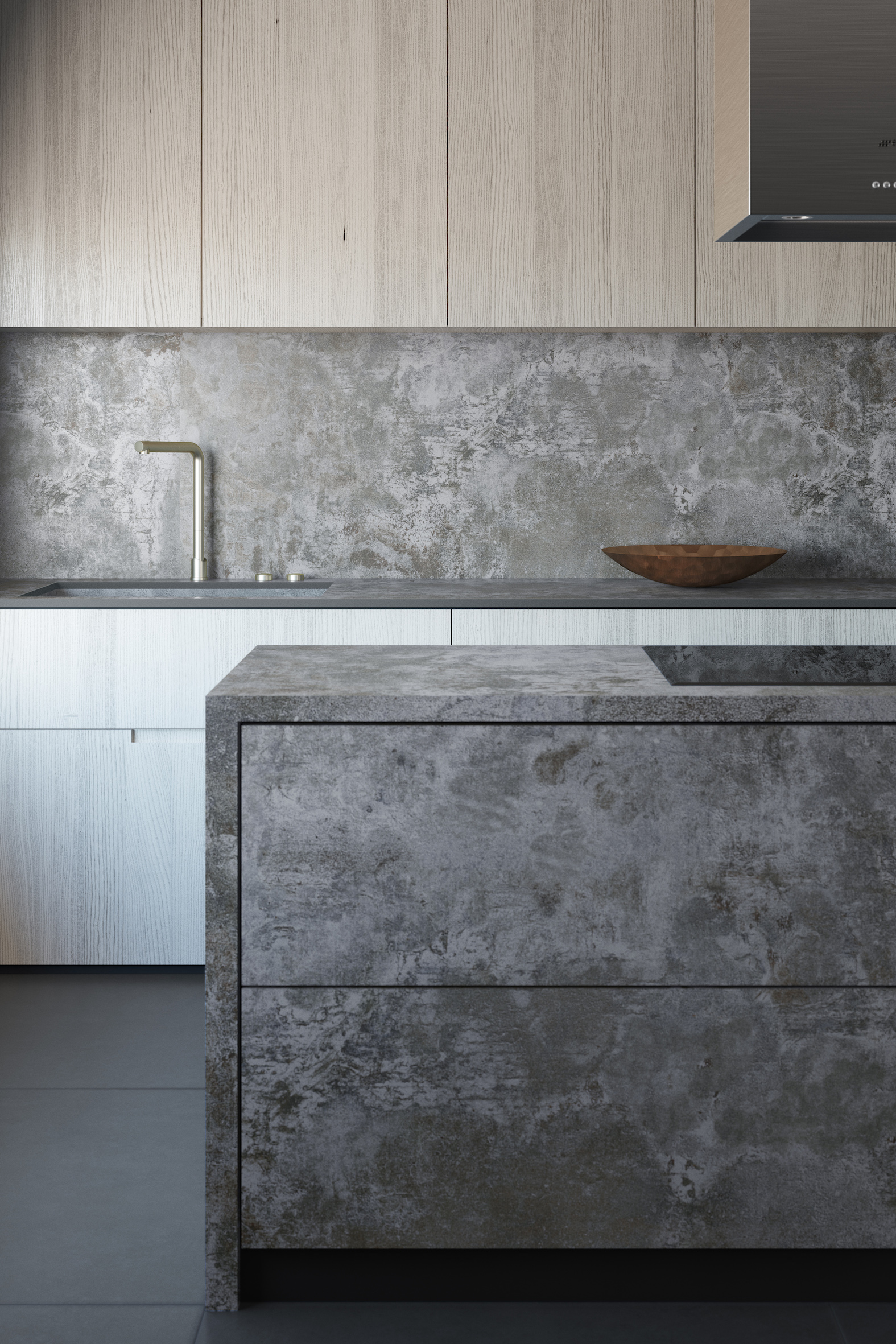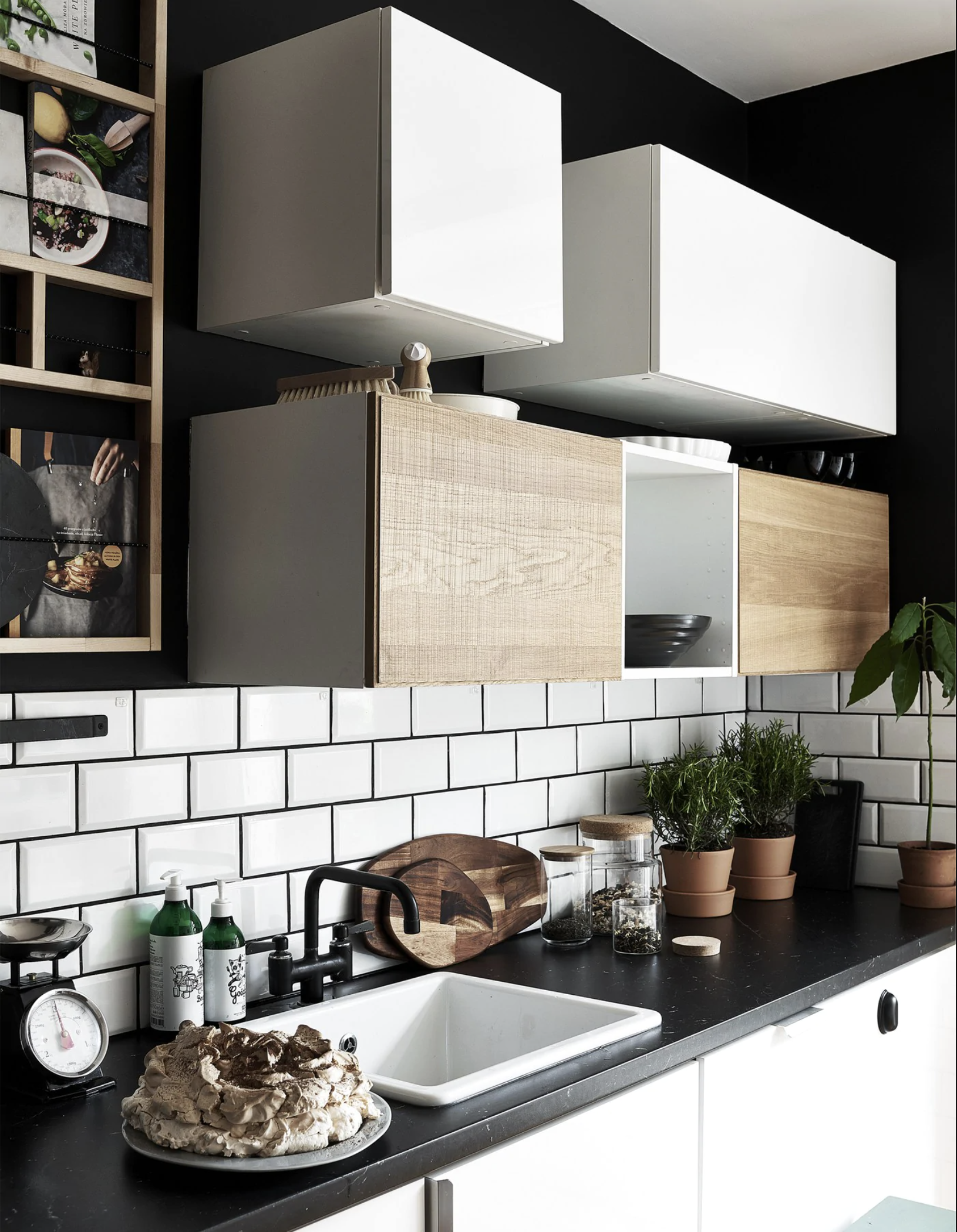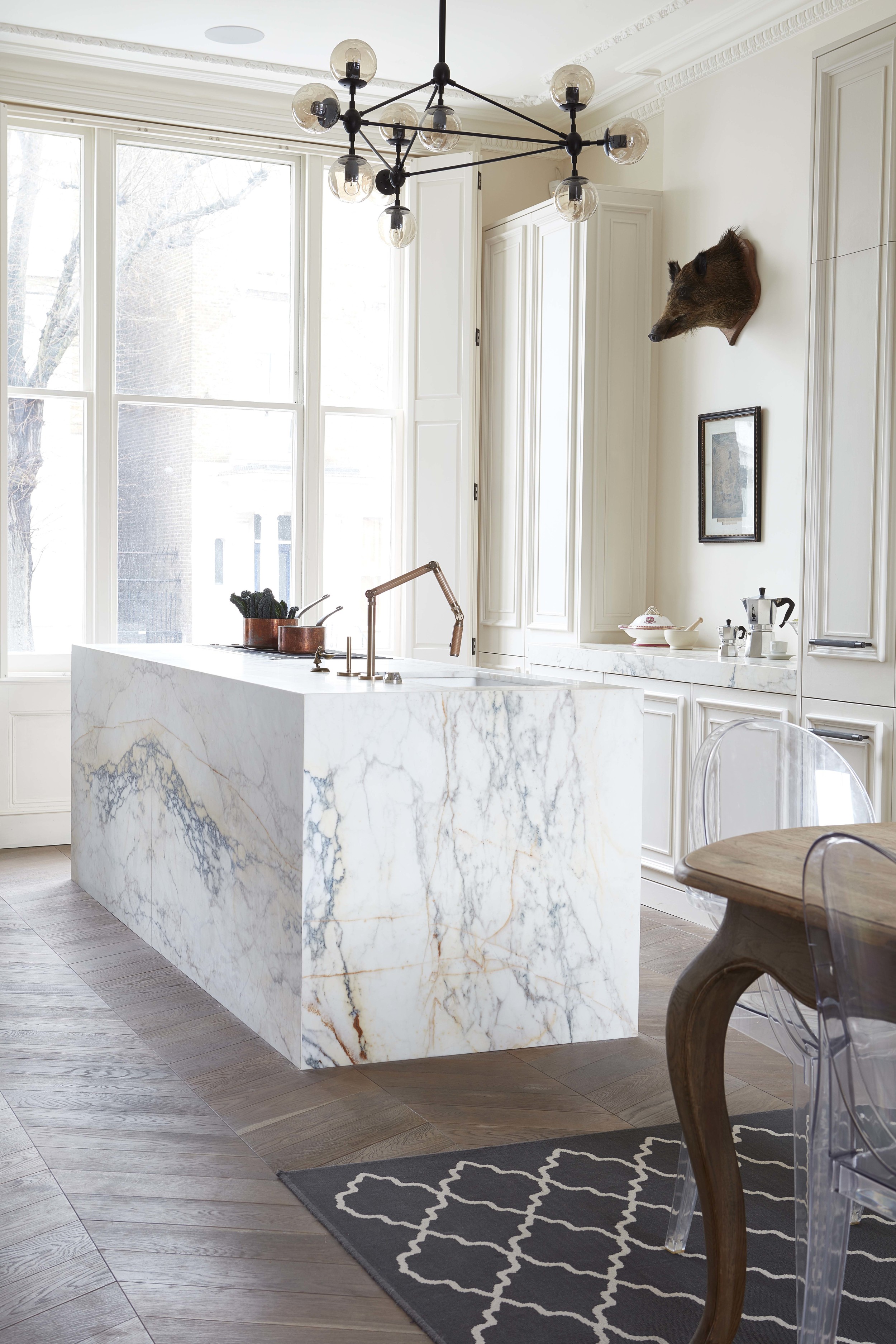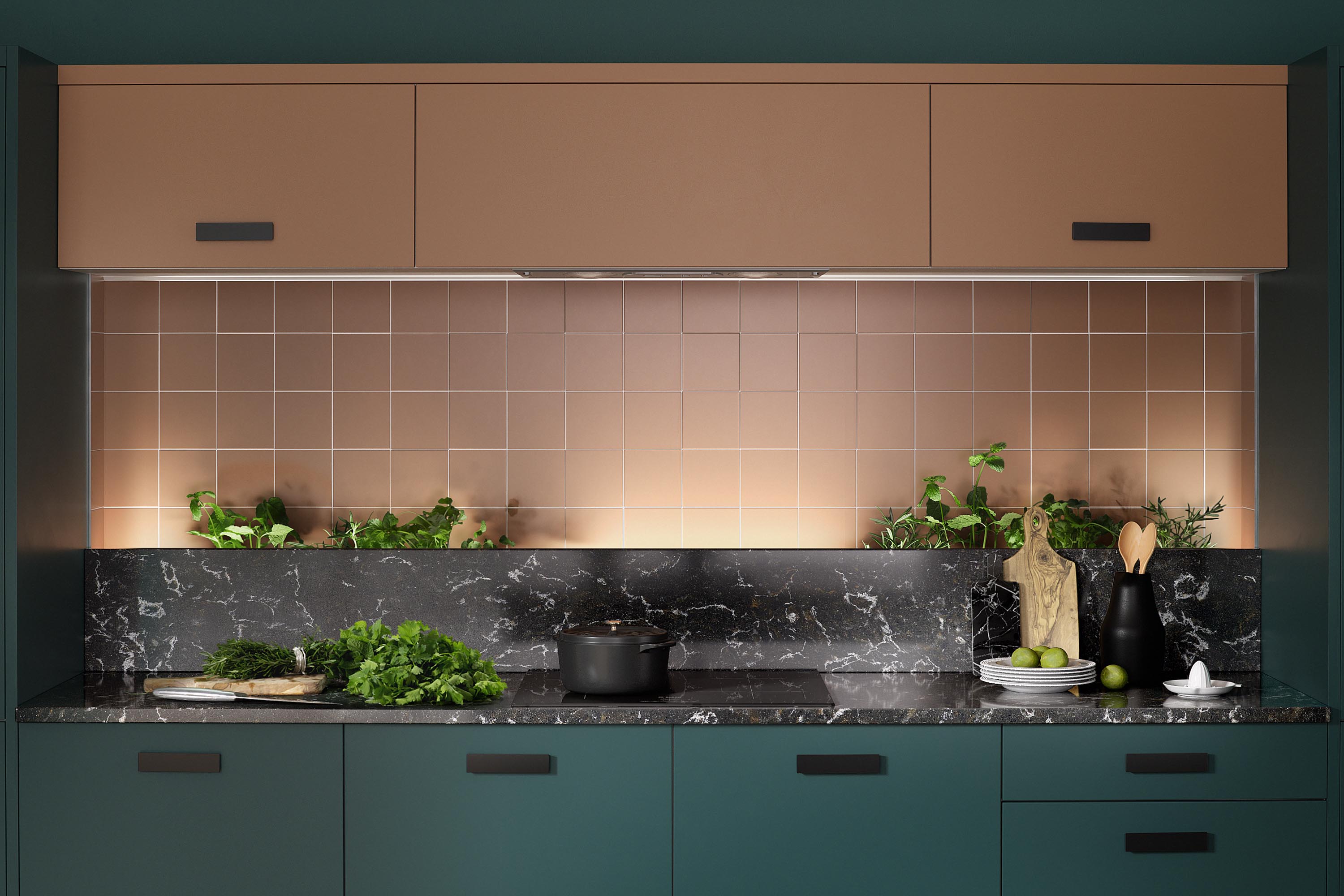

You can polish countertops that have lost their looks, whether yours are made from concrete, granite, quartz, marble or another material, using the right tools and method.
Because over time, countertops become tired and dull, and it's no secret with how hardworking they are in our kitchens... So if want to remove scratches or light scuff marks to make them shine like new again, rest assured that there are remedies to your problems.
To get scratches out of concrete and the likes, you’ll need to clean countertops first. This way, you can check how serious the scratch is, and remove any debris before you polish countertops.
Then, Chris Alexakis, home expert and co-founder of Cabinet Select recommends you ‘Purchase the correct materials. This includes safety goggles and gloves. You want to make sure you protect yourself when doing any home repairs. As for the right type of materials, make sure they match the surface. Marble needs marble-specific polisher, quartz the same, concrete is entirely different, and so on.'
'Tread lightly and go slow,’ he adds. ‘Don't rush the job. Start with the mildest materials first. Soap and water, then the polish, then potentially abrasives. Don't go in guns blazing, you'll be surprised what gentle products can accomplish.’

How to polish concrete countertops and remove scratches
Concrete countertops can be restored if they’re looking dull or scratched. To get a concrete countertop to shine again, and if the sealer is still working to protect it from stains and etching, you can use a 400 grit sandpaper and after wiping clean, apply a new coat of sealer. Make sure you follow the product instructions before applying.
If there is visible etching or staining when you polish countertops made of concrete, they will need restoration including resealing to protect the surface for a further period of time.
Get small space home decor ideas, celeb inspiration, DIY tips and more, straight to your inbox!
Can surface scratches be buffed out of concrete countertops?
Scratches to a concrete countertop can be fixed much like when removing scratches from glass but they will need more than buffing out to restore the surface.
A minor scratch in a concrete countertop could be fixed relatively easily as it might be the sealer that protects it from stains and etching that’s scratched rather than the concrete itself.
Clean the concrete countertop first using a mild dish soap solution. Rinse with clean warm water and dry with a lint-free cloth.
You can make the repair with an acrylic sealer applied with a fine artist’s brush, applying according to the manufacturer’s instructions. Remove any excess and allow to dry.
You’ll probably need to blend in the repair using a fine grade sandpaper. Wipe down to clean the area when you’re done.
If the scratches on a concrete countertop are more serious, restoration of the entire countertop is the answer. You will need to strip or sand off the sealer as well as filling any pits in the surface before re-applying sealer.

How to polish granite countertops and remove scratches
If your countertops have lost the shine they used to have, they can be revitalized with polishing. The problem could be that they’ve accumulated a film over time. Although you might be wiping them down daily, it’s worth using a specialist granite cleaner once a week to restore the shine.
Also vital is to apply it with a microfiber cloth, which won’t damage the granite. Work in sections and buff using a circular motion to make the granite shine again.
What’s called etching can also make granite countertops look dull. If yours is a polished granite surface (don’t use this method on other granite finishes), the answer is to use a specialist granite polishing paste, following the instructions on the pack.
Can surface scratches be buffed out of granite countertops?
Surfaces scratches can be buffed out of granite. However, if the scratch is deep or extensive you may need to conceal it instead (see below), or call in a professional restorer.
‘To remove small scratches on your granite countertop, use a mixture of three tablespoons of baking soda and one tablespoon of water,’ says David Shell founder and CEO of TradesmenCosts. ‘Rub the mixture on the scratch in a circular motion. Let the mixture sit for at least 15 minutes and wipe it down with a damp towel.’
If that doesn’t do the job or scratches are more serious, use dish soap in warm water to clean the scratch thoroughly, rinse to make sure you have removed the cleaner, then use a soft, lint-free cloth to dry the area.
Next, gently buff the scratch using #0000 steel wool. Work carefully in small circles, and check after a few minutes. If the scratch still looks as it did when you started, you’ll need to use another method (see below).
When you’re finished, rinse the area using a dish soap solution applied with a soft cloth to remove debris. Allow to dry.
Afterwards, check to see whether your efforts have taken off the seal of the granite by sprinkling the area with water. If the water beads, there’s no need to do anything else, but if the water has spread or left a mark after 10 minutes or so you’ll have to re-seal the granite for which you’ll need a granite sealer and which should be applied according to the manufacturer’s instructions.
For a deeper scratch in granite, you may need to conceal rather than buffing it out. If that’s the case, get an acrylic repair kit made for granite countertops. Apply as per pack instructions.

How to polish marble countertops and remove scratches
Marble is a fabulous countertop material, but it is softer than granite and therefore issues can occur. If yours are looking dull, you'll want to clean marble countertops using either a mild dish soap solution or a specialist marble countertop cleaner first, ahead of polishing them for shine.
Use a polish following the manufacturer’s instructions. When you’re buying, make sure the polish is recommended for your particular countertop to bring back its shine.
Can surface scratches be buffed out of marble countertops?
It is possible to buff out surfaces scratches in marble. As with granite, you might need to use abrasives to remove and polish countertops made from marble. Deep scratches? It’s best to call on a professional.
‘Most of the time, you can get rid of scratches using a soft cloth, warm water, and dish soap,’ says Madison, Wisconsin home improvement contractor Andrew Wilson of Contractor Advisorly. ‘Simply wet the soft cloth with water and dish soap and lightly wipe the area with it.’
If that’s not sufficient, for light scratches on polished marble, the best solution can be simply to polish as above (see ‘How do I get my countertops to shine again’).
If the scratches are deeper, a marble polishing powder can be used. Clean and dry the stone first then apply the marble polishing powder and spray with water to turn it into a paste. Using a soft pad work it into the marble with a circular motion for a few minutes. Wipe the polish off before it dries, and if the scratch hasn’t gone, repeat. Repeat the process over a wider area to blend the restoration in, wipe off, then use clean water to rinse the surface.
After that all you need to do is buff with a microfiber cloth to bring back the shine.

How to polish quartz countertops and remove scratches
Quartz countertops often have a glossy finish which should stay that way, but if yours have become dull over time, you can fix the problem. While the material is very hard wearing, scratches can occur, and there are ways to deal with these, too.
Quartz countertops that have lost their shine are likely to have been cleaned with the wrong products so that they have become covered with a film and can’t reflect the light as they once did.
To fix the issue, you can use a mild dish soap solution and a soft cloth to clean yours. Rinse thoroughly afterwards and dry with a soft cloth. As an alternative, use a specialist quartz cleaner as recommended by your quartz countertop manufacturer, which will also avoid the problem of residue.
Can surface scratches be buffed out of quartz countertops?
While it’s hard to scratch a quartz countertop, it’s not impossible. You can take action to fix the issue yourself, though. A minor scratch in a quartz countertop can be polished out, while for more serious versions, a filler is necessary.
A word of caution: check your warranty before you embark on renovations of a quartz countertop as some procedures can invalidate it. If you’re in doubt, call in a professional instead.
Begin by cleaning your quartz countertop with a mild dish soap solution, then dry completely using a microfiber cloth.
You’ll need a polishing compound made for quartz, along with polishing pads and a grinder. You’ll likely start with a coarser grit to take the scratch out, moving to finer versions to create a shine.
Follow the instructions with the product, which will likely involve using several compounds from coarse to finer grits, cleaning up in between and changing pads. You should use a small amount of compound and the grinder set to the lowest speed to work across the surface. Clean the counter with water to finish.
For deeper scratches in quartz, use a resin filler according to the manufacturer’s instructions. You’ll need to fill the scratch then leave it to set before scraping off the excess with a blade held at a 45º angle. Follow by polishing as above.
How do you polish composite countertops?
Composite countertops can be quartz based or solid surface versions, which are made using acrylic or polyester material. To get the shine back on a quartz countertop, just scroll up to the section on ‘How to polish and remove scratches from quartz countertops’.
To polish countertops and restore the shine to a solid surface material, you can use a countertop polish but make sure it’s specified as suitable for use on your particular brand of solid surface to avoid any issues with your surface’s warranty. Make sure the surface is clean and free of any crumbs first, then use a microfiber cloth to apply the polish with circular motions. Buff with a second microfiber cloth.
How do you get scratches out of solid surface countertops?
You may have a maintenance kit provided when you purchased your solid surface along with a manual and guidance on the repairs you can do yourself and those that require a professional. If not, you can purchase solid surface repair kits, and use according to manufacturer’s instructions.
Hi-Macs recommends removing superficial scratches from its solid surface countertops with a wet Scotch-Brite or similar pad, then cleaning with soap and water and allowing to dry. Deep scratches require sanding with 120 grit sandpaper, then 220 and 320 grit, the company says, followed by use of a wet Scotch-Brite pad or similar in a circular motion.

Sarah is a freelance journalist and editor writing for websites, national newspapers, and magazines. She’s spent most of her journalistic career specialising in homes – long enough to see fridges become smart, decorating fashions embrace both minimalism and maximalism, and interiors that blur the indoor/outdoor link become a must-have. She loves testing the latest home appliances, revealing the trends in furnishings and fittings for every room, and investigating the benefits, costs and practicalities of home improvement. It's no big surprise that she likes to put what she writes about into practice, and is a serial house revamper. For Realhomes.com, Sarah reviews coffee machines and vacuum cleaners, taking them through their paces at home to give us an honest, real life review and comparison of every model.